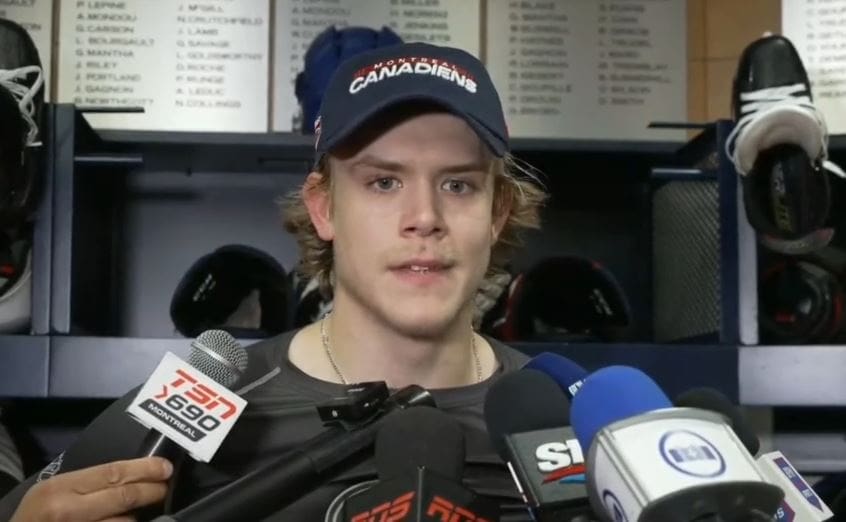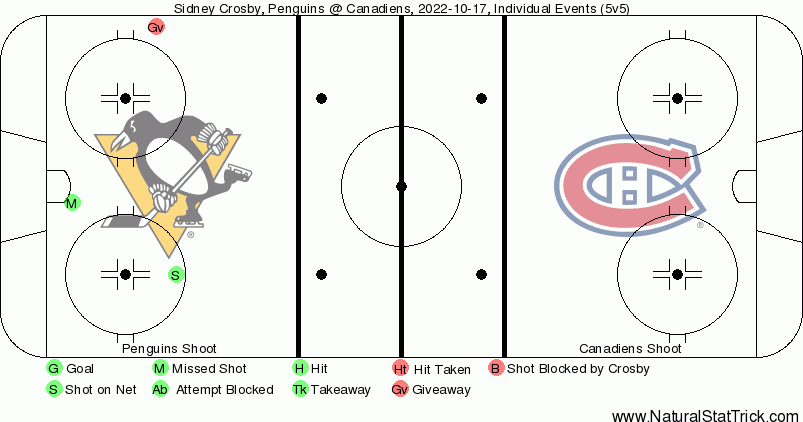Montreal Canadiens
Guhle Has Been Good For Habs, Here’s How He Could Be Better

With a quarter of the regular season in the books, Canadiens rookie Kaiden Guhle has certainly been a busy defenceman.
It’s the perfect time to evaluate his results and opine on possible changes that could improve his overall numbers.
Production
As it stands, thanks to a strong start in the offensive zone that has led to one goal and seven assists, the rookie is on pace to earn 33 pro-rated points this season.
If Guhle can maintain his current scoring pace, he will end up being the 5th most productive rookie defenceman in Montreal Canadiens franchise history, behind Chris Chelios (64 points), Tom Kurvers (45 points), Guy Lapointe (44 points), and P.K. Subban (38 points).
What’s more, all eight of Guhle’s points have come at even strength. There are no guarantees he can keep his production level up, but if he does end up with 33 even-strength points, he would finish the season as the most productive rookie in Canadiens history with equal forces, ahead of Lapointe (30 points), Chelios (28 points), and Petr Svoboda (24 points).
If we even the playing field by filtering for games played, Guhle still figures among the top-10 Canadiens rookie defencemen with 0.4 points per game.
This pass by Kaiden Guhle is straight up art. Nice finish by Slafkovsky as well. #gohabsgo pic.twitter.com/yq9cJL8pQs
— Matt Drake (@DrakeMT) November 6, 2022
Usage
Thanks to his role, which usually involves facing the opposing team’s best players, Guhle is on pace to be one of the most utilized rookie defencemen in team history. With 20 minutes and 22 seconds of average ice time, only Subban and Stephane Robidas received more ice time as rookies.
In other words, when it comes to traditional statistics, Guhle fits the bill as a legitimate contender to be considered for the Calder Trophy.
He’s also looked great when playing against players such as Sidney Crosby.
A quick look at Crosby’s heatmap in their first meeting, which involved Guhle facing the Penguins captain in over 15 of his total 24 minutes, reveals the rookie defenceman can shut down some of the best players on earth.
Guhle ended up controlling almost 70 percent of the shots against Crosby’s trio that night.

Flip Side
But there is a significant red flag in his game.
Statistically speaking, Guhle, particularly when used alongside David Savard, has produced very underwhelming numbers.
For example, they’ve managed to control a little more than 40 percent of the shots, and a lot less than 40 percent of the high-danger scoring chances.
In an ideal world, they would not be facing an elite level of competition, and that has surely led to a downtick in possession metrics, but there have been situations throughout the season that could lead you to believe Guhle is not the issue on the top pairing.
The eye test gives us our first clue.
Savard has an affinity for lying face down on the ice to block passing lanes and shots. In a vacuum, it’s a sound strategy, but hockey is better understood as a series of events rather than individual situations.
A blocked shot may mitigate a scoring chance initially, but more often than not it leads to chaos in the defensive zone.
An immobile defender is a vulnerable defender.
With that in mind, it would be unfair to pin all their problems on Savard’s play.
Simply put, he’s done as well as anyone could have expected in a role that is not suited to his skill set.
But the fact remains Savard has only enjoyed two seasons throughout his career in which his team controlled more than 50 percent of the shots when he was on the ice.
With the Canadiens, Savard has controlled a little over 40 percent of the shots, and that includes 62 games worth of data points that did not involve Guhle.
Options
But something interesting happened in the very limited games that featured Guhle alongside a different defensive partner.
When playing with Jordan Harris, Guhle’s numbers improve significantly. In a little under 20 minutes together this season, which is admittedly a low sample size, the pairing has controlled almost 60 percent of the shots and 80 percent of the high-danger chances.
Quelle façon se marquer son premier!
☝️☝️☝️☝️☝️
That's goal No. 1 in the NHL for Kaiden!#GoHabsGo pic.twitter.com/Pg1YYnx9C7
— Canadiens Montréal (@CanadiensMTL) October 28, 2022
The same phenomenon occurs when you evaluate Guhle’s numbers beside Arber Xhekaj. Again, it’s a very limited sample size, but when the two rookies were on the ice together the Canadiens once again controlled over 60 percent of the shots.
Xhekaj, Guhle, and Harris all shoot from the left side but shot balance should never trump overall puck control when it comes to roster decisions.
Savard performed admirably as a stop-gap measure while the Canadiens’ blue line was mired with injuries, but if the team expects him to eventually produce encouraging underlying numbers, keeping Kaiden Guhle away from his most familiar defensive partner would be a wise decision.
(All Montreal Canadiens and Kaiden Guhle statistics are 5v5 unless otherwise noted, via NaturalStatTrick)










